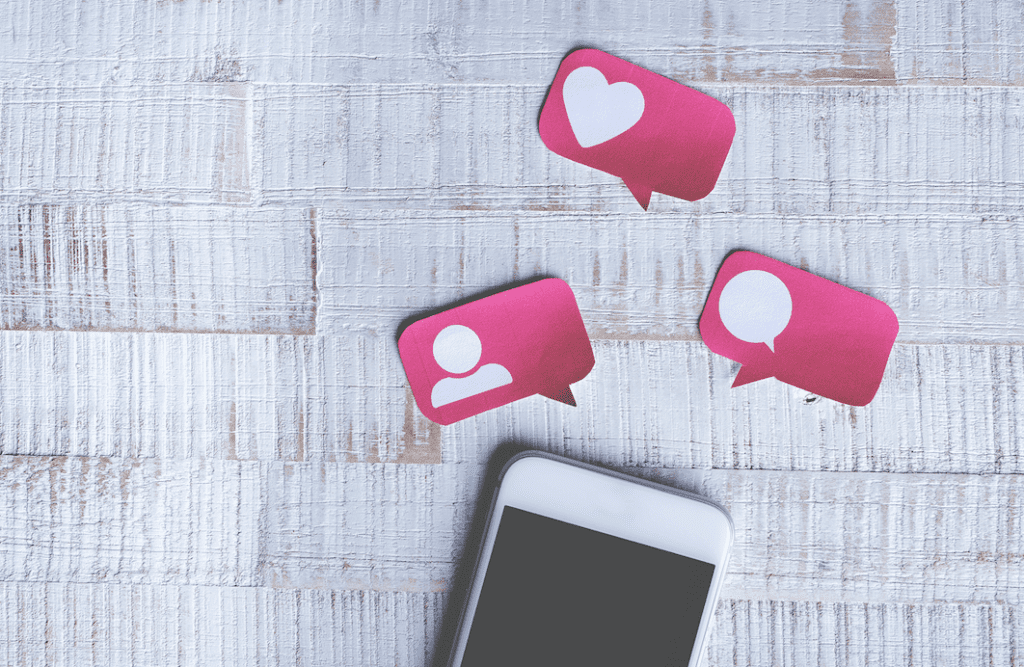About a month back, specifically mid-morning September 20th, I received an email from one of my favorite clients that stated something along the lines of, “need to chat about this ‘Likes’ Lead to Nothing – and Other Hard-Learned Lessons of Social Media Marketing.” The link was to a Harvard Business School article which was, as expected from HBS, a very good piece. Good, but for the one paragraph stating that social media “Likes” lead to nothing.
The paragraph repeats a common argument that has been floating around board rooms and CxO suites of late: specifically that buying Facebook “Likes” was and is a misguided approach for brands. I have been addressing this myth with our clients for the better part of a year now. Generally, I can help them see the light, but it is a bit harder when it is HBS giving them this feedback.
Our Response
So, here for the record and for the benefit of my clients, I am responding directly to you, Harvard Business School, explaining why you are wrong. Given that you are the premier business school in the country, I’ll do my best to give you ample support for this assertion.
First, let me affirm a few things. Your list of six ways in which brands have gone wrong and seven ways brands are getting it right are both accurate and useful. There are lots of gems throughout both lists. I am sure my affirmation brings you great comfort.
Now, let me orient you to the issue at hand. You’ll remember the first of your list of “where brands have gone wrong” is titled: Prioritizing technology over substance. In relation to this category, the statement that “Likes” lead to nothing is accurate. Yes, the first part of establishing that you are wrong, HBS, is to concede where you are right. This is the place from which the chatter has emerged and where we can put it to rest. When a brand focuses only on the number of fans they want without any discernment for what type of fan they hope to attain, those “Likes” lead to nothing.
Here are three examples of how wrong this can go and how useless “Likes” can be:
BOTS – We both know that “Likes” can be acquired through purely digital means. Brands may believe that there is a value in having a large number of Fans, and either knowingly or unknowingly pay for “Likes” on their page that are generated entirely through automation. Not much needs to be said about this other than that these “Likes” literally lead to nothing.
Enticed Fans – When a brand runs a page like ad that has little or nothing to do with their core brand story, but gets a person to click on it, thereby gaining a fan of the brand page, then those “likes” lead to nothing. In the last election cycle 3 different candidates used “Like to Stop ISIS” as their webclick ad. This is a concrete example of the enticement not directly connected to the brand. As an exaggerated example, imagine you sell razors and you run a page like ad with a picture of kittens and copy that says “Like if you love kittens”. You’ll definitely grow the “Likes” of your page, but that aggregated group will have no affinity for your brand, and those “Likes” also lead to nothing. Facebook will generally not approve blatantly misleading content like the above example under their Misleading or False Content prohibition, but you get the idea.
Purposeless Fans – When a brand runs a page like ad targeting 18-65+, worldwide, basically all of Facebook, even if the creative and copy are relevant and brand specific, those “Likes” tend to lead to nothing. This case is a little nuanced. The problem with this approach is not that the Fans aggregated aren’t valuable, in fact as your research confirms, they have self-selected as having an affinity for the brand. The problem here is the brand has given no thought to who they want to reach and what they want them to do. If a brand can’t describe a specific targeting category narrower than “everyone on Facebook” then they must figure out who they want to reach before they launch a Facebook page, let alone worry about getting people to like it. “Likes” from Fans aggregated without a purpose will lead to nothing.
So, Harvard, you are correct. In the three cases above, and even in a few other ways I haven’t listed, “Likes” can lead to nothing. Had you put that little auxiliary verb in your title, or at least in the paragraph where you addressed “Likes”, you would have given me the tool I needed to address this comment with my clients. But, you didn’t. My hope was that, upon reading the article, a scope-limiting “can” of some form would be presented on some level. It wasn’t.
Here is the full paragraph from your article that addresses “Likes”:
Early on, many brands made the mistake of focusing on collecting reams of likes on Facebook, yet Gupta says those likes haven’t amounted to much—certainly not a whole lot of purchases. ‘Do likes lead to loyal consumers or do loyal consumers tend to like a brand on Facebook? Do these likes lead to anything?’ he asks. ‘What we found with our research was that likes lead to nothing.’
Truthfully, I was not looking forward to following the Harvard-crimson hyperlink to the supporting research that you provided. I recognized that if you had done research on this specific topic, odds were slim that I could counter your position. Still, my lived experience is that “Likes” have a huge value, so my job was to test that lived experience against whatever was on the far side of that link. With great anticipation (read anxiety) I clicked the link and found myself downloading a 41 page research paper. I read the whole report. Twice.
I have to say, after reading the summary on the last page, I was a little confused. In that summary is the following paragraph (emphasis added):
In sum, it would be wrong to take the present research as evidence of the total ineffectiveness of brand SNs. Instead, FB “liking” may be valuable to marketers when used strategically as a relationship- building, involvement-raising, knowledge-enriching tool. And as a targeting and marketing communications tool, brand SNs allow consumers to self-identify as fans of the brand, potentially helping the brand to build, and engage with, an audience predisposed to be receptive.
These are perfect categories for what the strategic application of “Likes” provide:
- Relationship-Building
- Involvement-Raising
- Knowledge-Enriching
- And building and engaging with an audience predisposed to be receptive
As one would hope from you, Harvard, this is concise, relevant, and eloquent. How, I must ask, does a research paper that ends with such a great laundry list of upside value for “Likes” fit as the hyperlink to anchor the statement “Likes lead to nothing”?
Of course, the answer is right there in the abstract of your research paper. On the first page you present the following: “Taken together, five experiments and two meta-analyses (N> 14,000) suggest that turning “liking” into improved brand attitudes and increased purchasing by either consumers or their friends may require more than just the click of a button.”
Look, you are Harvard freakin’ Business School, and after reading your research paper I encourage you to be much more confident about your findings. Based on my five years of building and running a social media agency, you can remove the soft peddling verbs ‘suggest’ and “may” from the description of your findings. It absolutely DOES require more than just the click of a button to extract purchases and increase brand affinity from a Social Network!
So, thankfully, I do not have to try and go head-to-head with you on your research. But I do have to take issue with the premise that your research somehow confirms that “Likes lead to nothing”. Your own research summary confirms that “Likes” have a whole laundry list of valuable potential outcomes. Even your distilled findings clearly indicate that something comes from “Likes”. If “Likes lead to nothing” then your distilled findings should read something like: “…suggest that it is impossible to turn ‘liking’ into improved brand attitudes and increased purchasing.” See what I mean? If “Likes” lead to nothing, then there can’t be something “more” after that click that would move someone from that click to better brand attitudes and increased purchasing. In fact your research is 100% right, but as you’ll see, the “click of the button’ is actually a vital predecessor to the rest of the customer’s digital journey to become an authentic fan and consumer of a brand product or service.
I believe that the reason you came to that conclusion is because you are voicing what you are hearing out in corporate America. What I’d like to do, now that I’ve affirmed you, is introduce you to the fundamental reality of what a “Like” is and why I am confident in my definition.
Social Contract
In our work, we come across brands all the time that have tens of thousands or even hundreds of thousands of “Fans”, but they’re Fans acquired in the non-value-building ways I describe above. These “Likes” lead to nothing. When brands work with us, we go about targeting specific demographics that fit the brand’s goals and we ask those targeted to authentically “Like” the brand Facebook page to opt in for more content. This is done with a Pagelike ad, which is a very efficient and effective tool. We slowly, deliberately grow an authentic base of people who “self select” as having some degree of affinity for the brand. Then, we go to work messaging and interacting with them via their newsfeeds.
“Fans respond to CTA’s (Calls to Action) with much more regularity and a deeper interest than non-Fans”
Our lived experience is that Fans respond to CTA’s (Calls to Action) with much more regularity and a deeper interest than non-Fans even when non-Fans are further narrowed with psychographic and/or demographic targeting that we assume should produce the “perfect” target for the CTA. Over the past five years we have repeatedly and unwaveringly confirmed this result.
As an example of how this works, consider this case study. We have a client that publishes articles on their website. We have built them a Facebook community of over 170k Fans during the past 36 months. Along with building this community we now routinely run web traffic ads to entice those Fans to click through to articles published on the website. We intermittently test click-through rates of non-Fans to validate that the Fan community significantly outperforms on the CTA to read the article. Not only do a higher percentage of Fans respond to the Call to Action, but after clicking, 30%-60% of them spend over 3 minutes on the destination article, indicating that they are actually reading the article. Non-Fans spend an average of 10 seconds on the article. The Fans respond to the CTA and they COMPLETE the CTA (in this case reading the article). We find the same increased response rates and completion rates across all our clients’ Fans and across most of the CTA’s we present those Fans.
So why does the Pagelike ad perform well with non-Fans and why do all other ads perform better with Fans? Because the Pagelike ad is not just a traditional awareness ad, it is also a “Social Contract”. Facebook users are asked if a brand can advertise on their newsfeed. They either opt in or let the contract go “unsigned”. When they agree to “Like” (and automatically follow) the page, they understand that they are inviting that brand’s content into their newsfeed. This is hard to get your arms around if you are a marketer used to traditional media and print advertising. But, picture the clicking of the “Like” button of a brand page as the fan signing an individual agreement to sell you space in their newsfeed. By running Pagelike ads, brands are asking non-Fans to let the brand run ads/commercials/content on their content channel (newsfeed) in the same way brands used to strike deals with ABC/NBC/CBS or People Magazine/Vogue/etc. The new ad buyer is the individual Facebook Fan. And if a brand can’t get a non-Fan to sign the initial agreement, that brand should stay off the non-Fan’s channel.
For now, brands can target them and force them to scroll past their content, but the “fast forward” on a non-Fan channel is the adept flick of the thumb that moves content through their screen in milliseconds. If they have not invited a brand to advertise on their channel, you sure as heck can bet that they will treat that brand’s ad as an intrusion and scroll past it ten times faster than fast-forwarding a TV Ad.
On the other hand, if they sign an agreement, the brand is given the courtesy of a half second pause on the next few posts from that brand to see if the content is relevant. This pregnant pause is worth its weight in gold. No, brands aren’t given any additional benefit; they still have to market to this new Fan in a unique and authentic way to move the relationship forward from there, but it is the opening itself that brands should covet. Only with this social contract and subsequent pregnant pause can a brand take advantage of the valuable advice you provided in the original article under discussion.
So, Harvard Business School, I submit for your review the following. Page like ads are an offer of a Social Contract. “Likes” are assents to the social contract offered and they secure time/attention in the sacred space of the Facebook news feed. These “Likes” are the price of entry to join their newsfeed, not for them to join the brand page. The number of Fans on the brand page is simply an artifact of the current social contracts, but those contracts are almost priceless. The great news is that once you understand this, you see that the rest of your article and the supporting research all confirm this. It would be a huge help to me personally if you changed your article title to “Likes lead to Everything – and Other Hard-Learned Lessons of Social Media Marketing”. Thanks!
PS – It appears as if Facebook agrees with this idea that “Likes” matter. In recent articles in Vanity Fair and The Guardian, it has come to light that Facebook is testing a model where they segregate out content from friends’ and “Liked” brand pages from all other content, whether boosted or not. It is quite probable that Facebook will ultimately only allow content, even promoted content, into primary news feeds if the newsfeed owner has liked the page. I would argue that the only exception will be page like ads that will be used to sell those pesky but essential “Likes”.



